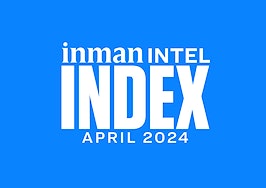- Having lots of product features in one tool can be too much of a good thing, and it can lead to less people using it.
- When choosing technology, place more value on usability versus what it can do.
- Sometimes you don't need the Swiss army knife of technology. Sometimes you just need a tool that does one thing.
Have you ever used a software solution or other technology and thought: this is a great product, but I just need a few of these tools?
Think about Microsoft Word. How many of those tabs have you legitimately used? It’s hard to imagine needing a tool for citations and footnotes when all you’re doing is writing a basic document.
Now think about finding the tool you do need to use. You click through all the tabs, then click back. It’s hard finding the one thing you need, right? What you experienced is called feature fatigue.
The size of the technology is too big for your need. Therefore, the product has become harder to use. Let’s channel our inner-Yoda:
- When technology is too sophisticated, it becomes harder to use.
- When something is harder to use, you get frustrated.
- Frustration leads to negative user experiences.
- Negative experiences convince you to find an easier solution.
- Looking for a new solution, you stop using the product you already bought.
Searching for technology shouldn’t be centered on: “How many things can this product do?” Instead, it should answer the question: “What do you really need to do?”
Understanding what you need
This is where the divide begins. Real estate businesses run the gamut. You could be a jack-of-all-trades, controlling all the operations. Or you might have a team, where staff members occupy specialized roles. Whichever business stage you’re at, you need technology to help.
The tendency with choosing technology is to look for “What can it do?” Hardly do we measure “How easy is it to use?”
Handling clients in real estate is not a one-step process. There’s the initial lead nurturing and helping people find the right house to see. Then there’s the process of making an offer and getting funding. In an ideal world, we want one technology to handle everything. How easy would that be, right?
This is where our hand gets stuck in the honey pot. Not everyone needs the same thing, but we all gravitate toward the solution that gives us everything. A two-man team who manages just a few clients doesn’t need a technology that offers accountability reports and mass-email functionality. How much do you care about holding your business partner accountable when you only close a few deals a month?
By choosing a technology that exceeds your needs, you’ve taken a step in over-complicating the solution. Remember, technology is there to solve your problem, not the problems of larger real estate teams and vice-versa.
The case for usability over capability
Usability has a twofold meaning. How easy is it to use the technology? And, are you going to use the technology? Both have financial implications.
Let’s start with: Are you going to use it? When Google Docs first came out, critics openly discussed how it would fail because its capabilities were far less than Microsoft Word’s. What they didn’t realize was Google did studies into how people use Word documents. It turned out, a large chunk of people were only using 10 percent of Word’s capabilities.
Google decided to launch with Docs, knowing people only needed a basic workspace to write. They made the product simpler. The results? Google Docs is now a serious contender for Microsoft Word and has been taking bites out of its market share since launching.
How did this come about? A core reason was its practicality. A majority of people just needed a simple doc to write in. The tools they wanted were easy to find and use. They didn’t need the advanced tools to write and print. For those who did need it, they had Microsoft Word. But for most, they didn’t need a motorboat to swim across the lake.
When you look at your real estate business, what current areas do you need help from technology? With the case of Microsoft Word versus Google Docs, when you’re ready to reach the next level, you’ll look for the right technology to solve the issue. But first, you begin with the simplest — because that’s all you need. Often, it’s less costly, and more team members adopt it.
Graduating to the more advanced technology
Many workplaces start with “full-stack” job positions, such as a full-stack developer or full-stack marketer. These positions require someone to know a little of everything. A full-stack marketer will handle email marketing, content writing, advertising, etc. As the business grows, those positions turn into specialized roles. Now, they hire email marketers, writers and so on.
When you first start out in real estate, you handle everything on a basic level. You certainly don’t need to build automated email campaigns. You just need to be able to send emails. As more business comes in the door, that will certainly change. Suddenly, you’ll need an office manager and full-time marketer. You get the drift.
The same rules apply to technology. Why pay for automated email capabilities when all you’re doing is basic emailing? Why even waste time learning how to use such a tool? Build your foundation first, then advance to the next level. It’s like riding a bicycle. You start with training wheels, then eventually you take them off. You’re not going to learn how to ride a bicycle on a $300 Trek road bike, are you?
How size impacts the business
Here’s a scenario: You need to create a flyer to market your business. It’s a one-time thing, but it has to get done. Which software solution do you use? Photoshop or Canva?
Here’s the difference between them. Photoshop has hundreds of tools and capabilities. It can do great things. But unless you’re a graphic designer, you probably need to learn all those tools and figure out the system.
Canva, on the other hand, is a free tool with just a few basic photo editing options, such as adding images, coloring shapes and re-sizing. It’s very easy to use, off the bat.
Considering the amount of effort, you’ll probably lean toward Canva. It has the right tools to accomplish the job, and you don’t have to spend hours learning it. It’s the right size for the right task.
If you had chosen Photoshop, you would have wasted hours trying to learn the tools. You would have spent less time actually marketing — or even dealing with your clients. All of it adds up to dollar signs.
Steven Trice is the Managing Editor at BoomTown. Connect with Steven on LinkedIn or follow BoomTown on Twitter.










